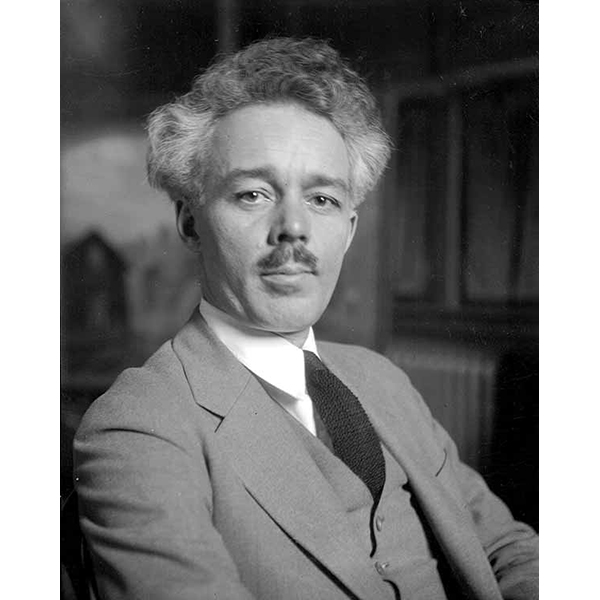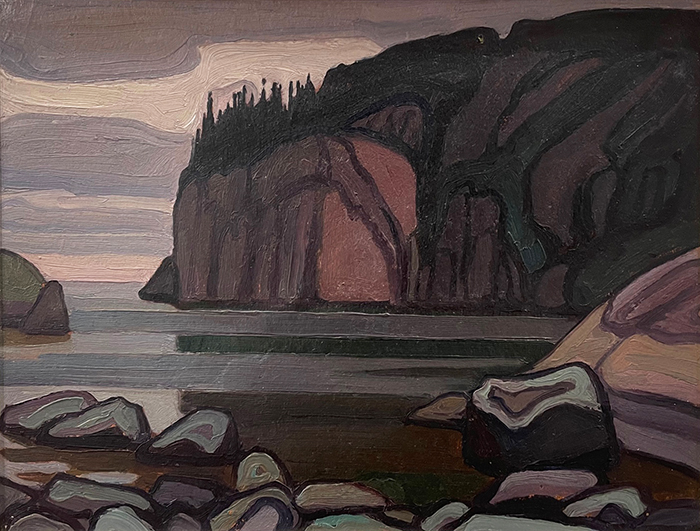Lawren Harris
Lawren S. Harris (1885-1970) - Artist Biography
Lawren Harris was born in Brantford, Ontario on October 23, 1885, and is best known as a member of the Group of Seven who pioneered a distinctly Canadian painting style in the early twentieth century. A. Y. Jackson has been quoted as saying that Harris provided the stimulus for the Group of Seven. During the 1920s, Harris’ works became more abstract and simplified, especially his stark landscapes of the Canadian north and Arctic. He also stopped signing and dating his works so that people would judge his works on their own merit and not by the artist or when they were painted. In 1969, he was made a Companion of the Order of Canada.
The son of Thomas Morgan Harris and Anna Stewart, Harris was an heir to the Massey-Harris fortune. The wealth and status of the family afforded Harris a privileged youth, which allowed him to focus on his painting career. He attended Central Technical School and St. Andrew’s College. From age 19 (1904 to 1908) he studied in Berlin. He was interested in philosophy and Eastern thought. Later, he became involved in Theosophy and joined the Toronto Lodge of the International Theosophical Society.
Lawren went on to marry Beatrice (Trixie) Phillips on January 20, 1910, and together had three children (Lawren P. Harris, Margaret Anne Harris, Howard K. Harris) born in the first decade of their marriage. Soon after meeting and becoming friends with J. E. H. MacDonald in 1911, they together formed the famous Group of Seven. He financed the construction of a studio building in Toronto with friend James MacCallum. The studio provided artists with cheap or free space where they worked.
In 1918 and 1919, Harris financed boxcar trips for the artists of the Group of Seven to the Algoma region, travelling along the Algoma Central Railway and painting in areas such as the Montreal River and Agawa Canyon. In the fall of 1921, Harris ventured beyond Algoma to Lake Superior’s North Shore, where he would return annually for the next seven years. While his Algoma and urban paintings of the late 1910s and early 1920s were characterized by rich, bright colours and decorative composition motifs, the discovery of Lake Superior subject material catalyzed a transition to a more austere, simplified style, with limited palettes – often jewel colours with a range of neutral tones.
In 1924, a sketching trip with A. Y. Jackson to Jasper National Park in the Canadian Rockies marked the beginning of Harris’ mountain subjects, which he continued to explore with annual sketching trips until 1929, exploring areas around Banff National Park, Yoho National Park and Mount Robson Provincial Park. In 1930, Harris went on his last extended sketching trip, travelling to the Arctic aboard the supply ship SS. Beothic for two months, during which time he completed over 50 sketches. The resulting Arctic canvases that he developed from the oil panels marked the end of his landscape period, and from 1935 on, Harris enthusiastically embraced abstract painting. After the disbanding of the Group of Seven in 1933, Harris and the other surviving members including A. J. Casson, Arthur Lismer, A. Y. Jackson, and Franklin Carmichael, were instrumental in forming its successor, the larger national group, the Canadian Group of Painters.
Harris was fully committed to expressing his concept of the mystical and spiritual in his paintings. As a practicing theosophist he had published writings, spoken publicly, and explained his art work in terms of his quest. Harris was quite unique in this regard, an uncommonly single minded artist who saw himself as a visual prophet. His paintings are his sermons, and increasingly, the forms he found in nature were his doctrine.


